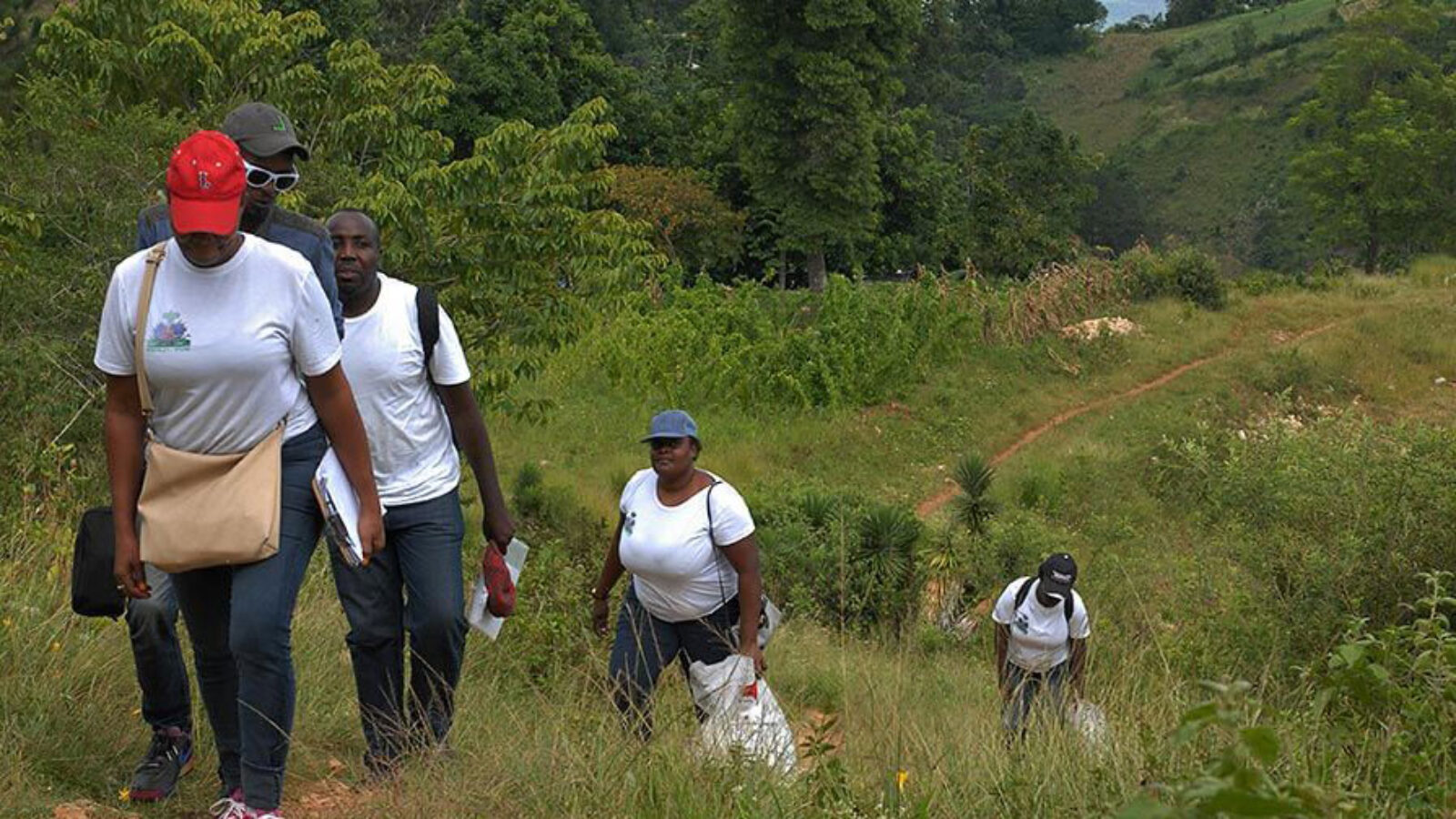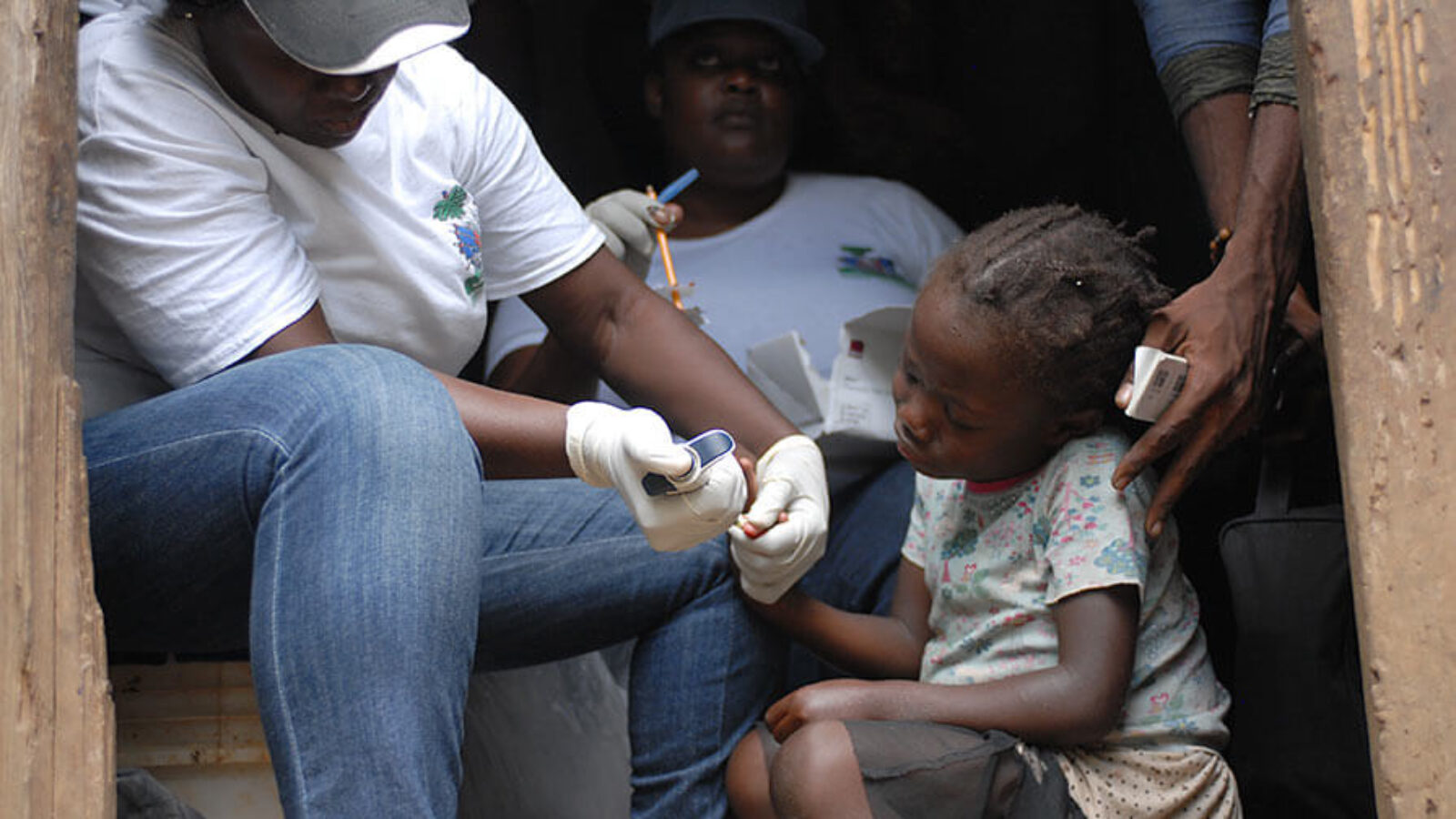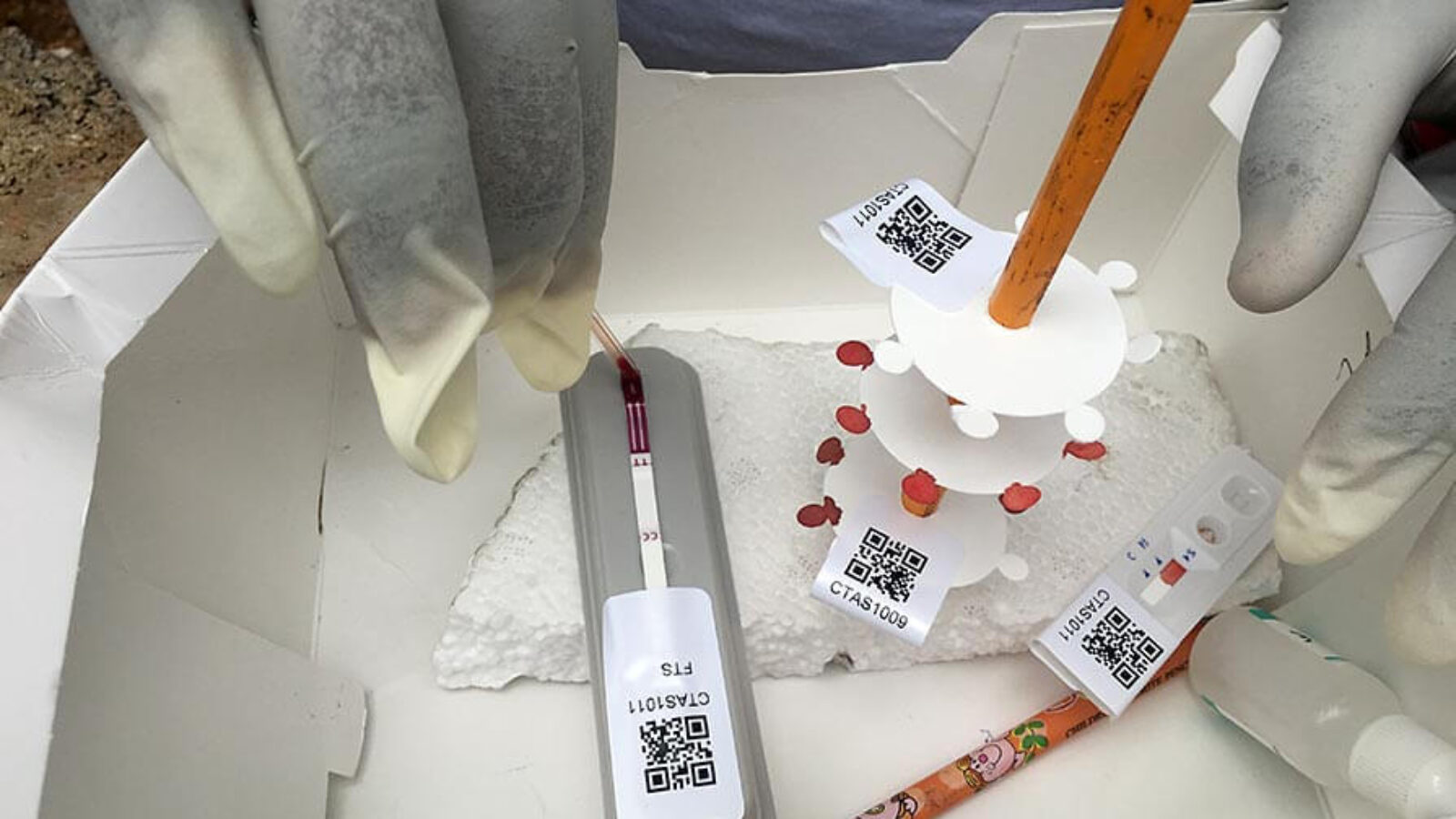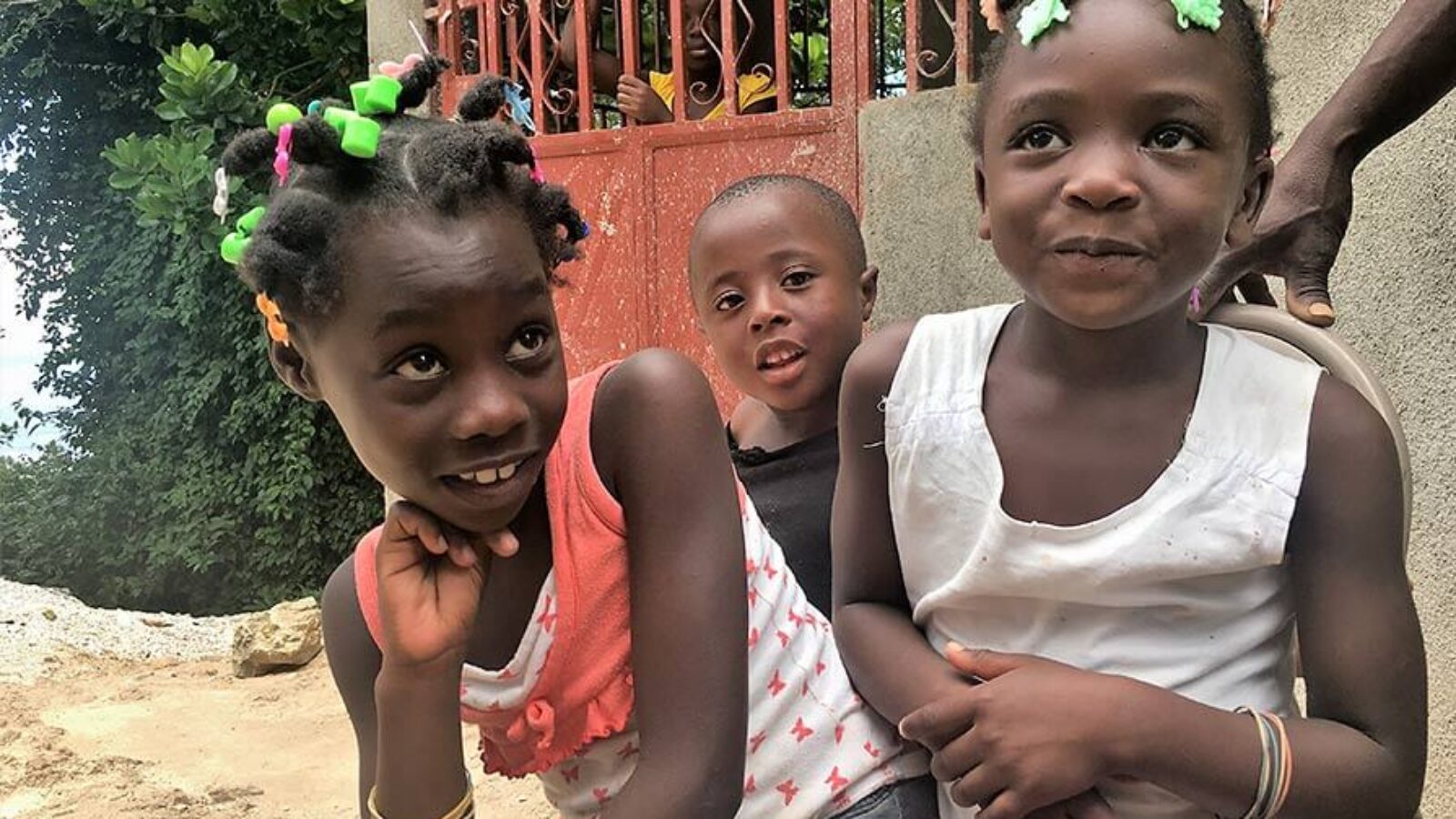Hopes Soar for Disease Elimination in Haiti
As a team of health workers arrives in Chan Bon, a tiny mountainside community south of Port-au-Prince, Haiti, the aromas of lush plants and cooking food hang in the air while clouds play hide-and-seek with the Caribbean sun. A small group of children noisily labors to free a makeshift plastic kite whose string is tangled in a tree.
The five workers, wearing white t-shirts bearing the logo of the Ministry of Public Health, go door to door along stony paths. One is comparing locations written on a sheet with readings from a hand-held GPS device. They’re looking for 6- and 7-year-old children, to test their blood for signs of two mosquito-borne tropical diseases, malaria and lymphatic filariasis.
Through its Hispaniola Initiative, The Carter Center is working with the ministries of health of Haiti and the Dominican Republic to eliminate those diseases from the two countries’ shared island home. In Chan Bon, the Ministry of Health has annually distributed albendazole and diethylcarbamazine (DEC) to kill the larvae of the parasitic worms that cause lymphatic filariasis, an illness that can cause disfiguring and disabling swelling of the limbs and, in men, the scrotum. Due to the characteristic swelling of legs and feet, the disease is called gwo pye — literally “big foot” — in Haitian Creole.
“We are all working on this together,” says Dr. Luccene Desir, the Carter Center’s program manager in Haiti, who has come to monitor the survey’s progress. “We all need each other. Just by taking the medicine, you are helping to eliminate a disease.”
Now, after five years of treatment, the population is being tested to see if parasite transmission has been interrupted and if treatment can be stopped. According to World Health Organization guidelines, children between the ages of 6 and 7 are targeted for testing because they should be free of infection if the drugs were successful in blocking transmission within their communities. Survey teams are also testing for evidence of malaria, which can be fatal if not treated promptly — a particular concern for remote communities like Chan Bon.
First up is Jessica, age 6, wearing a neat pink skirt, white top, and multiple colorful clips in her hair. Under the watchful eyes of her mother and grandfather, she sits patiently while health worker Guislène Deshommes, wearing surgical gloves, deftly pricks the tip of Jessica’s right ring finger with a sterile lancet. Jessica remains interested but expressionless as a drop of blood forms. Deshommes catches the blood with a pipette, transfers it to three test strips – a long, narrow one for malaria, a shorter one for LF, and a round one with six tabs that will be used for additional testing in the laboratory – and sets a small digital timer for 10 minutes. The little girl’s fingertip is covered with gauze while her family discusses the importance of participating in the campaign to eliminate these diseases.
“We know about gwo pye, and we don’t want it in our house,” says Jessica’s grandfather, Eliphet Brevil.
“What if someone in this area has it?” her mother, Marie Chantal Jean-Batiste, asks the health team. “I have a baby, and I want my family to be healthy and safe.”
Dr. Desir assures her: “If everyone has been medicated and no one we are testing has it, no one can get it,” he says.
“If my neighbor refused to cooperate with the health workers, I would do my best to convince them,” says Jean-Batiste, who as a pastor’s wife is influential in the community.
The timer goes off, and both test strips show Jessica has no trace of either malaria or LF. The child admits she doesn’t understand what’s going on, but she says she wasn’t scared and it didn’t hurt.
“I’m a brave girl!” she declares.
At another house is another little girl, who has a somewhat different reaction.
Christmène, age 7, sits serenely and doesn’t flinch as her finger is pricked. But the sight of blood causes a momentary panic.
“I need help!” she cries. Someone asks her if she can be brave. “No!” she wails.
Nevertheless, Christmène’s mother, Litane Beauge, is glad for the tests and for their negative results. Christmène is smiling now, pleased with the little bandage on her finger.
“I’m very happy, because if Christmène had been positive for malaria or gwo pye, it would be hard to get her to a hospital from here,” Beauge says. The result bodes well for her daughter’s future, she adds. “Christmène wants to go to school. She sees other children going, and she wants to go too.”
There are boys in this place too. Gregory stands quietly through the whole blood-sampling process, his mother, grandmother, and 12-year-old sister Wislove hovering nearby and minding him to behave.
In a moment it’s over, and he smiles a 6-year-old’s missing-teeth smile. “It hurt a little,” the tough little guy says with a casual shrug.
The health team stops to admire the panoramic view of the valley below, including Port-au-Prince in the far distance, before piling back into their vehicles to go to the next community. As the trucks begin to pull away, the formerly stuck kite soars high into the sky.
Global Impact Starts with You
Your support sustains the Carter Center's mission of waging peace, fighting disease, and building hope around the world.





